Their picture graces countless textbooks, a haunting image of madness multiplied. Writing for Mad in America in 2019, Patrick Hahn called their case “a sad and sordid tale,” but also “the most celebrated” one in psychiatric genetics.
The Genain quadruplets were a set of identical sisters diagnosed with schizophrenia in their twenties in the 1950s, catching the attention of researchers at the newly formed National Institute of Mental Health (NIMH). The institute’s scientific director, Seymour Kety, was then studying the role of genetics in the development of schizophrenia. A neuroscientist by training, Kety believed that the brain held clues to genetics—and that examining twins in which one or more had a schizophrenia diagnosis could prove fruitful.
When the researchers first learned of the foursome from Lansing, Michigan who’d all been found to have the mental illness, they “could hardly help but wonder what further proof of a genetic etiology of schizophrenia anyone would want to have,” in the words of NIMH psychologist David Rosenthal. After three years of psychiatric evaluations, doll play, handwriting analyses, Rorschach tests, electroencephalography, galvanic skin response tests, and more, they adopted a more measured theory, which Rosenthal outlined in his 1963 edited book, The Genain Quadruplets: A Case Study and Theoretical Analysis of Heredity and Environment in Schizophrenia: The sisters suffered from an “unhappy collusion of nature and nurture.” They’d inherited some predisposition to illness, then been subjected to a thoroughly pathogenic home. Both of their parents “practiced irrationality” and wielded control over every aspect of their lives. There were also vertical and horizontal identification patterns within the family, meaning that the quadruplets over-identified with their parents and one another.
As Hahn notes, the fact that all four were reportedly sexually assaulted did seem to not strike the book’s contributors as consequential, and the pseudonym assigned to them—meaning “dire birth”—prioritized genetics. Over the decades, as tragedy forced Rosenthal into retirement and NIMH’s psychology laboratory capitulated to the brain sciences, researchers became more decided that biology was primarily to blame, fashioning the sisters into the poster children of psychiatric genetics. Their case is now invoked “to illustrate the primacy of heredity,” though, as Hahn writes, it reveals “much more about its chroniclers than about its intended subjects.”
When I first read Hahn’s essay, I was riveted. Beyond charting scientific myopia, it described the strangest, most sordid scene of abuse: A father, obsessed with his daughters’ virtue, made their home into a prison, which he patrolled with a shotgun. Behind the always-drawn blinds, he permitted them no privacy, watching as they undressed and even fondling them. He claimed he was only testing how they’d later react on dates, though, when the time came, he forbade them from going on such dates. When he and this wife caught two sisters masturbating, they took them to a doctor, who surgically mutilated them. Following their high school graduation, three of the quadruplets were assaulted outside the home, and the patriarch did nothing about it. “During all this time, the local newspapers were running puff pieces portraying the Genains as the ideal American family.”
As I viewed internet photographs of the quadruplets—many of them as young girls in quaint stage costumes with perfectly coiffed hair—I could not shake the feeling that there was even more to the story. Prior to becoming the darlings of psychiatric geneticists, I sensed, these sisters had been the ambassadors of another, no less potent mythology, that of white racial innocence. The patriarch who was paranoid that some monster was out to ravish his daughters hewed so closely to the segregationist under Jim Crow. The surgeon who operated upon the two masturbating girls recalled the eugenicists I had chronicled in my first book, The Unfit Heiress, about a woman deemed “oversexed” and thus prone to cross the color line. And the townsfolk’s wholly symbolic investment in the family—their fascination with what the girls represented and their utter indifference to the goings-on behind closed doors—brought to mind both the segregationists and eugenicists who put white females on a pedestal to justify lynching and other forms of racial terror.
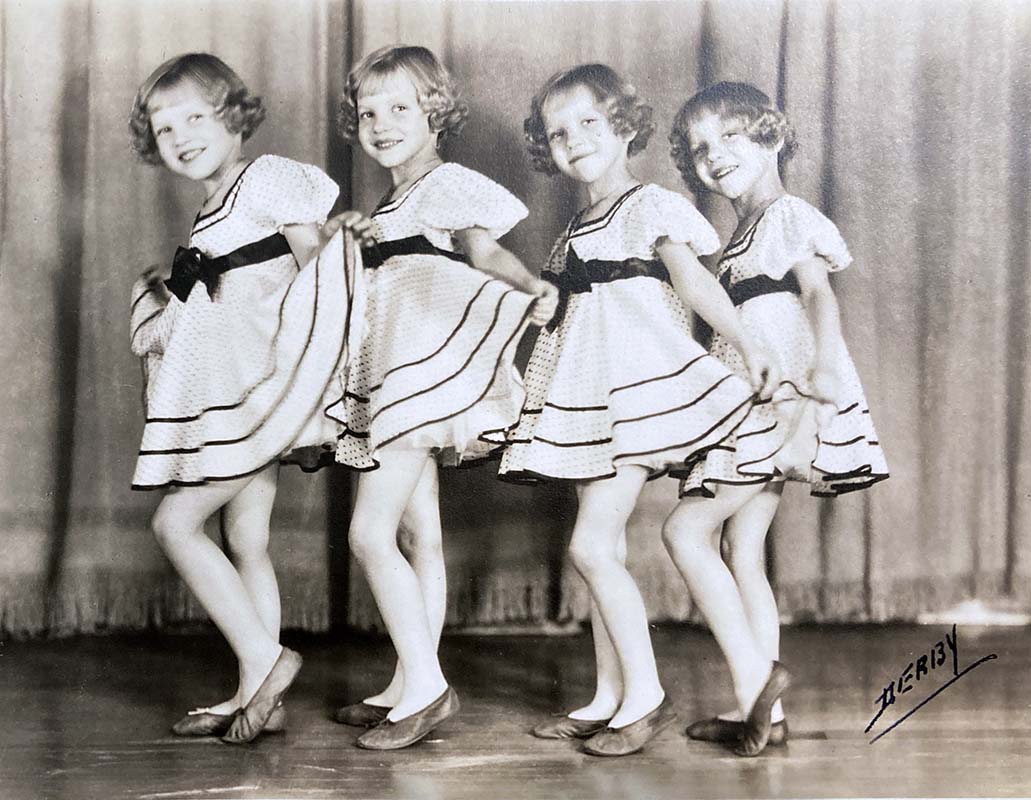
Rosenthal’s 600-page tome substantiates this framing, even as it never mentions race or racism in connection with its main subjects. In fact, one is left with the feeling that the specter of the Third Reich, and not just Jim Crow, loomed large over these sisters’ lives. In my own new book, Girls and Their Monsters: The Genain Quadruplets and the Making of Madness in America, I chase these two ghosts, urging that neither the quadruplets’ lives nor their scientific legacy can be fully understood apart from the hybrid cultures of antisemitism and anti-Black racism.
As recounted in Rosenthal’s book, the quadruplets’ father—whose real name was Carl Morlok— emigrated to the United States as a young boy. His mother told him that Germans were superior and that he should marry one of his own kind, as people from other nationalities were responsible for America’s troubles. Though neither Rosenthal nor his contributors say so, such views were common, as eugenicists warned that immigration and race mixing were going to lead to the downfall of white civilization. In the name of the race, eugenicists also targeted whites thought to be defective, which would explain why, as Rosenthal did report, doctors sterilized Carl’s niece, who had a cleft palate and apparently low intelligence.
Popular culture routinely portrayed the “lower” races as breeding like animals, and this anxiety clearly gripped Carl. After marrying a part-Irish woman named Sadie Lyon, he recoiled whenever she made advances, once asking, “Are you in heat?” Upon learning that she’d birthed multiples, he blurted, “What will they think my wife is—a bitch dog?” The doctor who delivered the quadruplets was even more pointed. When a pregnant Sadie conveyed her suspicions that she was carrying more than one, he replied, “Aren’t you a white woman?”
Good thing for Carl, the town early decided that his daughters embodied innocence, deserving endless charity and a stage career that not-so-subtly yoked innocence to white Christian American-ness. By six, the ribbon-wearing girls were travelling the Midwest to perform patriotic and religious tunes, many of which contained racial slurs. On at least one occasion, they opened for minstrel performers aboard a riverboat named Robert E. Lee. Their sentimentalized helplessness was a stark contrast to the barbarity of the men in blackface, as one of the sisters seems to have intuited. According to The Genain Quadruplets, when asked by a teacher to wear her hair differently to allow staff to better distinguish her from her kin, this sister joked that she ought to come to school in blackface.
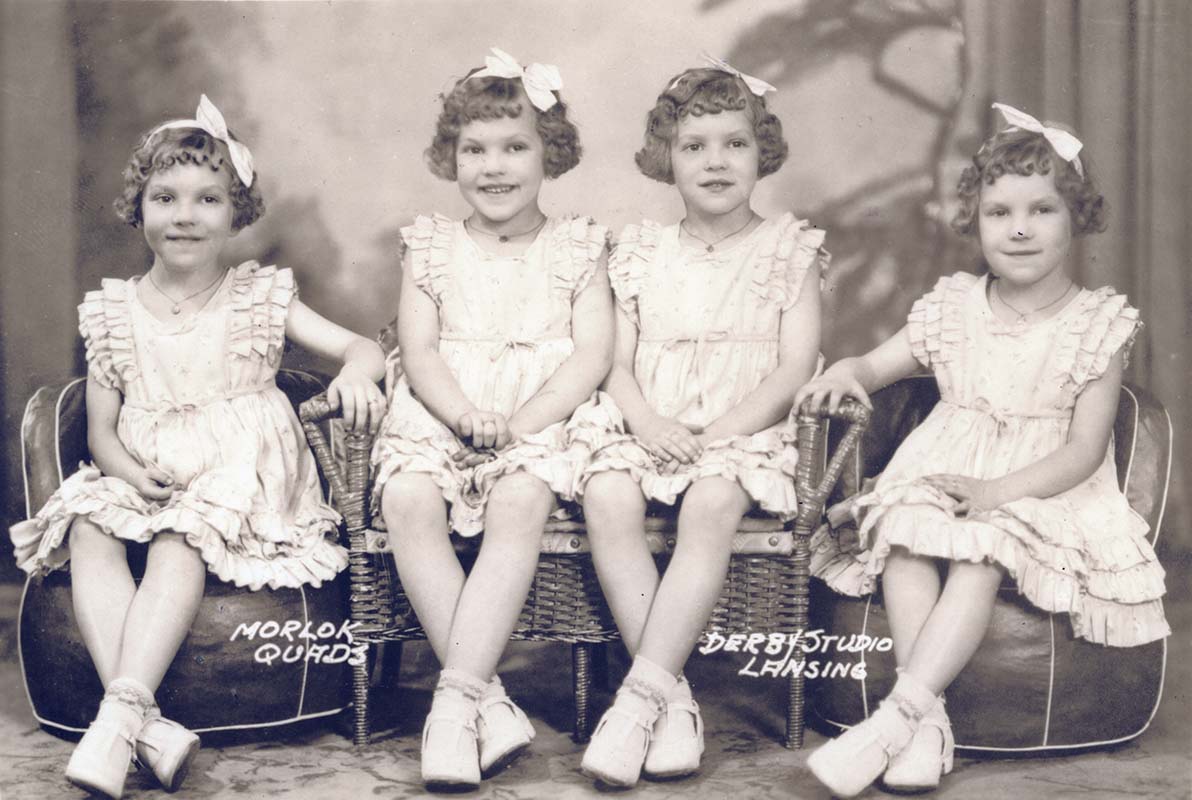
Little wonder that in a world obsessed with casting dark-skinned people as a menace to fair-skinned children, no one seemed to notice when one of the girls began to disappear with the school janitor, nor when this same girl came to school with bruises. Little wonder, as well, that the quadruplets’ overly protective father brushed it off when the first of his daughters was assaulted in the workplace. “Oh, that’s fellow’s alright,” he’s quoted in Rosenthal’s book. “He wouldn’t do anything. Maybe he was just intoxicated and scared you. You are liable to find people like that from time to time, so you should learn to handle yourself.”
By the time the sisters arrived at NIMH, they were deathly afraid of penetration, which they associated with contamination. A psychologist analyzing Rorschach protocols found that they were fixated on “disease, dirt, and being intruded.” So was Carl, who suspected a Jewish psychiatrist of sleeping with his wife. Carl was also startled to learn that his social worker was Jewish, although he appeared to tolerate this man, saying, “There’s good and bad in all of us.”
Sarah Morlok, the sole surviving quadruplet, has told me that Carl deeply admired Adolf Hitler. Once Germany won the war, he hoped, the führer would come to America to purge the country of its own waste humanity. Sometimes he made his feelings known when the family was out in public, and his wife would have to shush him. “You’re American now,” Sadie would scold. “They’ll deport us if you talk like that.”
But just as the local newspapers only ever portrayed the family as picture-perfect, the government researchers wrote race out of the story. This was despite the fact that many of them, including Rosenthal, were Jewish. How could this be?
Reading through The Genain Quadruplets, it became clear to me that many psychologists and social workers at the institute were enthralled by the “schizophrenogenic mother” theory, which posited that mothers drove their children crazy with a confusing mixture of warmth and hostility. Even when presented with a man as hateful and abusive as Carl, one after another of these neo-Freudians blamed Sadie for the sisters’ problems. (They also blamed Carl’s mother for his own troubles, which they tended to describe as mere quirks.)
Rosenthal’s son, Scott, suggested another reason for NIMH’s silence on race when he told me that his father perceived a need to avoid moral judgments: In the psychologist’s mind, politics were antithetical to science. Scholar Hannah Zeavin has shown that a “neutrality” mandate particularly gripped Freud’s devotees, many of whom had endured their own racial trauma. When war-time Jewish analysts were forced to flee Europe for the United States, they did not speak of what they’d suffered and, instead, determined to be the disembodied listeners that America required for its own victims and perpetrators of violence. “It simply didn’t matter if a case had its roots in the Holocaust or that a patient or their parent had survived atrocity,” writes Zeavin. “All that mattered was the transference, the psychic action in the room.”
Furthermore, NIMH’s psychology laboratory had no Black psychologists or psychiatrists, who were far less willing to cordon off the world when considering people’s distress. By the 1980s, some such professionals had come together to found the Black Psychiatrists of America, immediately putting pressure on NIMH to diversify its ranks. But even while NIMH officials declared racism “the number one public health problem facing America,” the institute was slow to comply, and staff members, including Kety, disparaged efforts to address “minority problems.” Both internal researchers and external grants favored biological research, looking, for instance, at the outcomes of patients put on antipsychotics, which were being hailed as magic bullets.
When the quadruplets returned for follow-up studies in 1981, soon after Rosenthal’s retirement, the door had been closed on sociological lines of inquiry. Rosenthal’s successors subjected the sisters, along with Sarah’s two sons, to a battery of blood and neurological tests, not really bothering to discern what occupied their conscious or unconscious minds. (And it turns out that the family’s little clapboard two-story had remained a house of horrors.) In 1996, when the quadruplets were 66, researchers went to Michigan to search for a chromosomal oddity recently found in Swedish triplets diagnosed with schizophrenia. They came up short, but marveled that, with the help of prescription drugs, the sisters had managed to lead relatively normal lives.
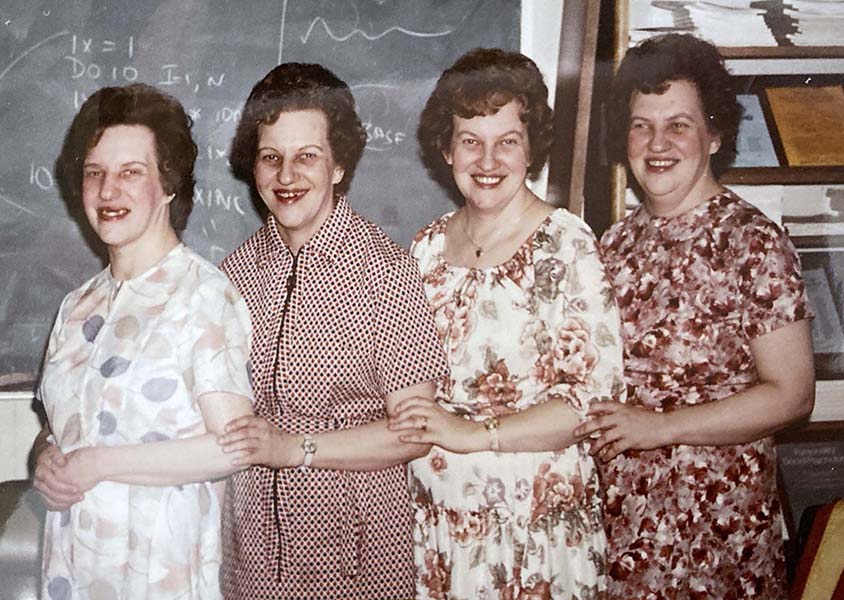
It doesn’t surprise that the quadruplet studies are largely regarded as a travesty among psychiatry’s critics. Besides Hahn, Lucy Johnstone, Jay Joseph, Richard Bentall, and Peter Breggin have criticized either Rosenthal or his successors for downplaying childhood trauma. And yet, it is not difficult to see myth-making in some of their own analyses. Breggin, for instance, suggests that Rosenthal’s suggestion of a genetic etiology was “a form of child abuse,” while Bentall accuses Rosenthal and his colleagues of being so dogmatic—so “exclusively genetic”—that they shrugged off the harms the sisters had suffered. These statements ignore the painstaking attention that The Genain Quadruplets’ contributors paid to familial relationships, parental communication styles, and inner conflicts. The fact is, it was primarily experts gripped by the schizophrenogenic mother theory (not the more biologically-minded) who first let Carl off the hook. These experts’ inattention to sexual abuse was surely a shortcoming of their analysis, but it is not evidence that they were gunning for genetics.
With their distortions, Breggin and Bentall reduce the quadruplets to the flat, silent objects of their youth. Here, the women who adored Rosenthal—who wrote him soul-bearing letters and telephoned him in their despair—become screens onto which others can project stories about their enemies. And they are stories, both Breggin and Bentall going so far as to portray Rosenthal as a promotor of Nazi science. They do so on the basis that he admired the theories of inheritance articulated by psychiatrists Ernst Rüdin and Franz Josef Kallmann, who were involved with the Third Reich and, in Kallmann’s case, the American eugenics movement.
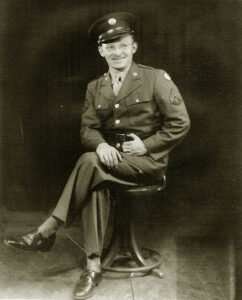
What does it mean that two well-known critics can essentially call a beloved Jewish man a Nazi while failing to see how the legacies of antisemitism and racism materially impacted the quadruplets? At the very least, I think, it means that psychiatry’s detractors have their own ideologies to deconstruct. The prevailing whiteness of the “psy” professions has prevented many from seeing race and racism as core parts of the psyche, as worthy of analysis as childhood trauma and other phenomena. Whiteness has further prevented many from seeing how sexual trauma may double as racial trauma, requiring more sophisticated frameworks for understanding a case like the quadruplets’.
Like many sex abuse victims, the sisters suffered from deep shame and guilt. In fact, Rosenthal’s readers learn that Sarah’s psychotherapy at NIMH largely focused on getting her to accept the fact of sex and “[her]self physically.” How much were her feelings exacerbated by the meaning that white society ascribed to her body—by the fact that townsfolk essentially made her body a stand-in for the national body, to be kept pure of invaders and undesirables? It certainly seems that she had some sense of her representational significance, telling her therapist that she perceived a need to be a good girl or else risk the world falling apart.
Consider, as well, Sándor Ferenczi’s “confusion of tongues” or Anna Freud’s “identification with the aggressor,” which remain compelling theories for understanding why some individuals identify with their abusers. In 1932, Ferenczi suggested that trauma robs children of their senses, putting them into a dissociative trance wherein they become transfixed by the desires and behaviors of their aggressor. Children are easily disoriented by a “confusion of tongues” because abusers don’t just threaten and scare—they provide affection and security. Freud, for her part, suggested that “identification with the aggressor” is a defense mechanism intended to protect the self from hurt and disorganization. By taking on the identity of the person who has harmed them, a child feels empowered. Isn’t this affinity for predators easily compounded by the pervasive logic of lynching, which insists upon white virtue and thereby tricks countless white girls and women into believing they need to submit to the very men who are prone to hurt them?
I cannot help but think of how Sarah, the only quadruplet to marry, specifically sought a spouse who wouldn’t rape her, settling on a military man who closely resembled her father. Though he never forced himself on her, he was indifferent when his friends made unwanted advances. “He was never protective of me at all, telling people I could take care of myself,” she once told me. Reality surely ran counter to the world she’d been made to stage in minstrel shows.
Some might argue that society has evolved since the quadruplets’ adolescence. It’s certainly true that blackface and other racist cultural practices are now deemed impolite, but the legends of Jim Crow have endured and been adapted to target other perceived enemies. Consider the public’s insatiable appetite for what literary scholar Dohra Ahmad calls “oppressed Muslim women” narratives (e.g. Betty Mahmoody’s Not Without My Daughter), which portray Arab men as beasts; former President Trump calling Mexican immigrants “rapists”; or the growing number of conservatives who describe gay and trans adults as “grooming”—even “sodomizing”—children.
There can be no question that we are still living through a moral panic, with those in power brandishing the innocence of certain people to authorize violence against others. In recent days, many have rightly expressed concern for LGBTQ+ kids and those of color, who are being demonized by too many stakeholders to name. As these children are the most vulnerable, they deserve the greatest consideration. But the story of the Genain quadruplets, I would argue, demands that we also ask what will happen to the youth who are being made to symbolize innocence, nowadays reduced to cis-ness, sexual purity, and whiteness. They, too, are being forced to bear the burdens of slavery and segregation. They, too, deserve better than the culture of death that white mythologies promulgate.
Note: Parts of this essay are adapted from “Girls and Their Monsters: The Genain Quadruplets and the Making of Madness in America.”

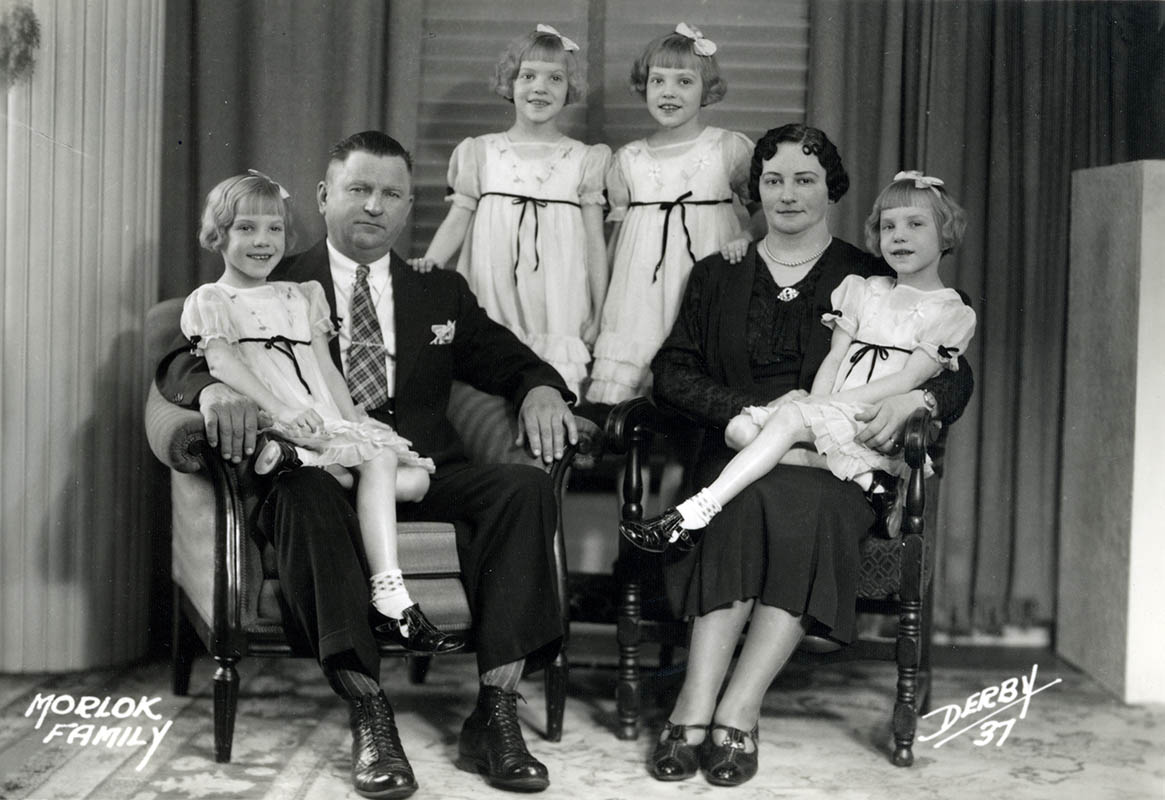
Psychiatry is sexist, racist, biased, misogynist, ageist, and all-around PREJUDICED —
Report comment
And most of all, ABLEIST —
Report comment
But here’s the word about “psychiatry” that says it all: EUGENIST —
Report comment
Holy moly this story hits on EVERYTHING. Incredibly grateful for the truly liberatory insight offered by the author.
Report comment
It is very strange that misogyny and sexism are never mentioned in this article. One of the girls had her clitoris swabbed with carbolic acid as a punishment for masturbation. Then two of the girls were forced to undergo female circumcision. The father was clearly abusing his daughters sexually and was obsessed with their bodies and their sexuality. He was also abusing them in other ways. He tried to strangle his wife.
Misogyny and male abuse of girls and women is not about “whiteness”. Surgeries conducted on female genitals for psychiatric reasons were not about “whiteness”.
These girls were victimized by their father because they were girls. Doctors mutilated their genitals because they were girls. Misogyny is very real and I am unable to understand why the author refuses to mention misogyny and portrays the horrific misogynistic violence these girls experienced as caused by anti-Black racism, as if it were somehow inappropriate to mention misogyny.
Report comment
I really think you’re removing a lot of the nuance of the article.
Racism is just one part of it. Misogyny is another part (and, certainly, the premier one). The article is chock full of mentions of misogyny. The “schizophrenic mother” theory that shifted blame away from the quadruplets’ father, the idea that women and girls are prey objects, the perceived “purity” of female virgins, etc. All of this was mentioned. I don’t think it’s necessary to spell out “THIS IS MISOGYNISTIC” when that’s something we already know. Like, we’re literally discussing the mistreatment of women.
The article is about race because it, unlike misogyny, is not immediately obvious in this case. It is about how the girls’ whiteness was emphasized by those around them, and how that *interacts* with misogyny to create this sort of highly traumatizing situation.
Sorry for replying to a comment that’s over a year old, by the way. I just got here while reading about quadruplets. But this is an article about women, the author is a woman, I’m a woman, and you’re (presumably) a woman. That’s not to say we’re a monolith, but I don’t think we’re on different sides here.
Report comment
From my experiences being a Guinea pig for psychiatry (over two decades since I was 13 years old) most of it’s abusive practices weren’t rooted in “whiteness” but opportunism. Especially when your relatives and members of your own community can cash in on selling you out for a nice check.
Most of the “mental health” professionals I was assigned to were Hispanic (of Puerto Rican descent) like myself. People who tried to couch their treatment of me with cultural relatability and sprinkles of Latino paternalism/maternalism (speaking to me in Spanish; citing God, Jesus, or the Bible) in order to get me to lower my guard and pretend that I was in the hands of people who really understood me.
But their ulterior motives were the same as their white and non-Spanish-speaking counterparts. To make money while continuing to propagate an industry that creates mental illness while pretending to treat it. White, black, Latino, Asian, female, or male, all of these practitioners pray to the All-Mighty Dollar and their own professional hubris.
It didn’t help that my aunt who was my legal guardian and a social worker (you’ll find a lot of overlap between this profession and psychiatrists) fed me to these wolves like a piece of meat and to this day insists that I take my medication and defraud the system for disability money. My experiences as a foster child were far less traumatic than my time living with her.
Report comment
Removed for moderation.
Report comment
Removed for moderation.
Report comment
It might be that you need more space than this article allows to explain your reasoning, but I’m not seeing this tragic story as being about the consequences of these women having been cast as white-purity pin-up girls as children.
Bigotry is evil and one I have no doubt spreads harm beyond its targets. But this particular argument isn’t hanging together for me.
And though I’ve re-read the lines in question, I don’t understand the criticism of Breggin and Bentall in this account either. If someone promotes Nazi science, surely in doing so they are a promoter of Nazi science. Which is different from accusing the promoter of being a Nazi.
Report comment
Reading things like this reminds you of who the “crazy” ones are.
Report comment
Up is down, black is white. “Normal” is crazy; “crazy” is often sane.
“Society highly values its normal man. It educates children to lose themselves and to become absurd, and thus to be normal. Normal men have killed perhaps 100,000,000 of their fellow normal men in the last fifty years.” RD Laing
It is no measure of health…
“The supporters of the idea of healing through forgetting obviously are not aware of the price society pays for this ‘health.’ It is a known fact that the men and women who helped Hitler commit mass murder did not need psychiatric help. They adapted excellently to conditions under the Third Reich and later effortlessly made the transition to postwar life. They could easily forget. They held down jobs, started families, mistreated their own children–all without the slightest twinge of guilt. These people didn’t dream. And they never for a moment thought they had done something terrible by carrying out their ‘duty.’ Hitler and those like him were, indeed, proud of their ability to forget their traumas. But surely we don’t want to again pay the price for forgetfulness . . .
It is not true that post-traumatic illness can be healed by forgetting, despite the fact that many people try to heal it in just this way. They do so at the expense of their own bodies or of other people–their children, patients, students, or the soldiers who have to die in the ‘holy wars’ perpetrated because those who initiate them refuse to remember. Such destructiveness, however, can only function so long as children, patients, students, and soldiers permit it to function–that is, so long as they do not have the courage to look their mothers and fathers in the eye, question their views, and voice their doubts at the dangerous opinions passed down from generation to generation.” Alice Miller https://archive.org/details/breakingdownwall00mill_0/mode/2up?view=theater
Report comment
Thank you for covering this topic! I borrowed the original 600-page book on the quadruplets when it piqued my interest, but I could not finish it because it felt like there was so much untold. I could not stomach the way that it was reported and remained skeptical of everything that had been written. I will be buying your book at my next opportunity.
Report comment